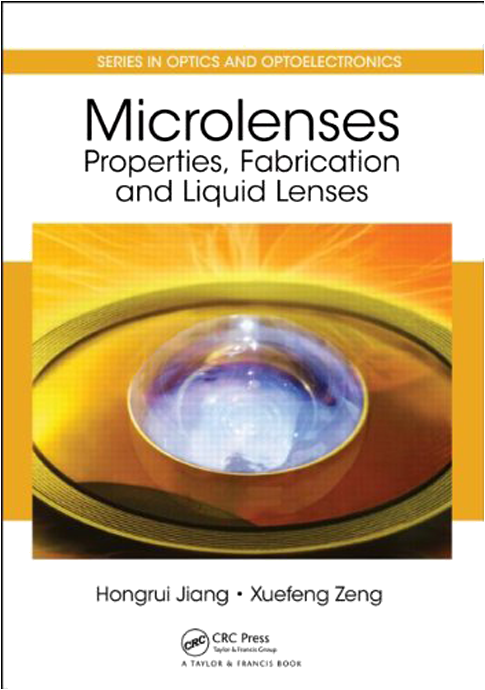
Microlenses have diameters about 1 mm and smaller. Highly focused, the authors waste no space in this monograph to get from Robert Hooke’s experiments to 21st-century science in just three sentences right on p. 1. Clearly, the reader will get a concise description of the state of art in microlenses from this volume.
After covering a plethora of topics in single paragraphs in Chapter 1 (7 pages), the authors devoted Chapter 2 (30 pages) to the basic physics of liquid microlenses—though much of the latter chapter also applies to solid microlenses. Chapter 3 (27 pages) covers fabrication methods that are useful for a wide variety of devices and structures, not necessarily microlenses. Solid microlenses have fixed focal lengths and are therefore not tunable. Techniques for their fabrication are discussed in Chapter 4 (33 pages). Liquid lenses are tunable in a variety of ways. Five types of electrically tunable liquid microlenses are presented in Chapter 5 (35 pages). These include liquid-crystal microlenses, microlenses encapsulated in polymer films, dielectrophoretically tuned microlenses, microlenses tuned by electrowetting, and electrochemically activated microlenses. Glass-membrane microlenses, polymer-membrane microlenses, and hydrogel-activated microlenses exemplify the mechanically tunable liquid microlenses covered in Chapter 6 (33 pages). The integration of horizontal microlenses in microfluidic circuitry is the scope of Chapter 7 (21 pages). The monograph concludes with five avenues for further research presented in Chapter 8 (5 pages).
The authors could have provided a few more details. For instance, the quantities appearing in Eq. (2.1) are not illustrated, which is likely to leave an ignorant reader ignorant on the use of matrix algebra for designing and analyzing optical elements. Reference to a textbook would have helped for this equation and similarly for several other equations.
Language, too, suffers some blows in this book. As an example, the term “incident angle” is meaningless for geometric angles, though angle irons can of course be incident on other objects. Tense often vacillates between the present and the future unnecessarily. The authors are not clear whether to consider equations as parts of sentences or not, and punctuation suffers accordingly. These issues should have been remedied in copyediting.
The title and the subtitle of the monograph indicate some confusion about its scope: whereas the title encompasses both solid and liquid microlenses, the subtitle sets liquid microlenses apart from their solid counterparts. Traces of this confusion are sprinkled throughout the volume.
The authors incorrectly consider the division of the speed of light in free space by the refractive index of an isotropic achiral material to yield the “speed of light in the medium.” Several figures must have been produced in color but were converted into black-and-white images in the printed volume, thereby losing detail and information.
The density of information presented in this volume is perhaps insufficient to justify its cost, but the reader can acquire a panoramic view of microlenses and microlens arrays. Admirably, the authors have provided references to microlens literature in some profusion, so that the reader will not be left high and dry. A one-night stand with this volume is recommended for the reader, who is also advised to read the titles of journal papers referenced to get a better perspective on microlenses.



